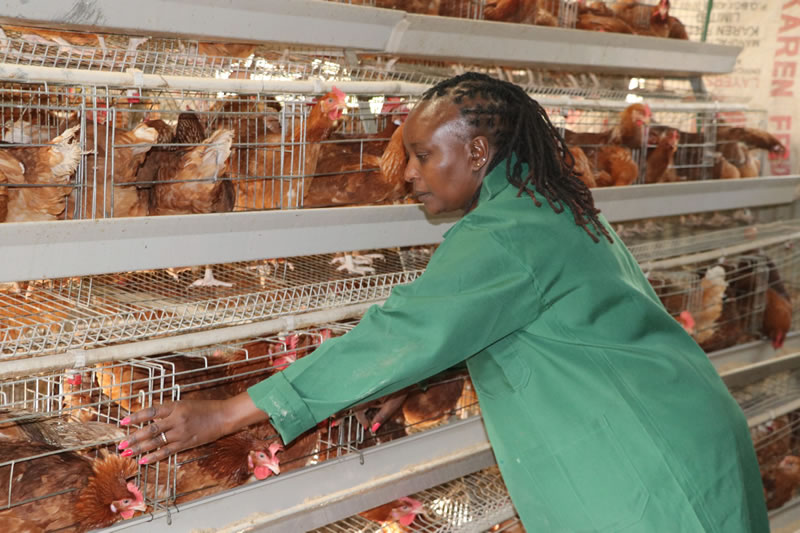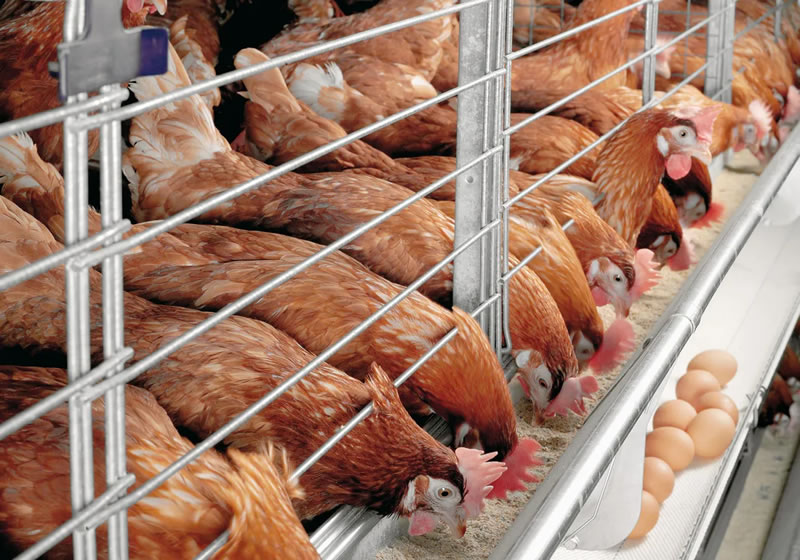Have you been wondering what agribusiness initiative you can embark on in the coming year? You might want to consider farming layers. If you have no clue, this article will equip you with a guide on how to get started, stay afloat and make profit. Starting a layers farm can be very rewarding with proper planning and management. Here’s a breakdown of the necessary steps in starting a chicken layers farm in Kenya.
Step 1: Preparing, exploration and investigation
First and foremost, before doing anything else, it is important that you embark on thorough research. This entails understanding different chicken breeds that are suitable for egg production, local regulations on poultry farming so as to abide by them and the housing requirements. When planning, you need to formulate a business plan for how to go about it from planning to optimization. Decide on the number of chicken you would like to have on your farm laying to your desired amount of eggs and also assess the demand for eggs in your area.
Step 2: Financial Planning
Preparing a budget is crucial as it allows for helping shape a roadmap for production before actual implementation and forecast outcomes. It also makes it easier for you to identify hidden costs that might have been otherwise overlooked until it’s too late as well as understand the cost of production. By documenting your plans, you can later reflect upon your expenditure and see where you may have underestimated or overspent.
Breakdown of costs:
- Cost of 200 Chicks: Purchasing 200 chicks at 130/= each amounts to KSH 26,000.
- Equipment Costs:
• 6 drinkers @450 = 2,700 KSH
• 6 chick feeders @150 = 900 KSH
• 6 round feeders @450 = 2,700 KSH
• 1 Infrared bulb @750
• 1 brooding jiko @1,500
• 5 bags of wood shavings @200 = 1,000 KSH
• 500mls Norocleanse disinfectant @450
Total: 10,000 KSH - Feeding Costs:
• Chick Mash (Day 1-8 wks): 8 bags of 50kg chick mash at 3,000 KSH per bag totaling 24,000 KSH.
• Growers Mash (9 wks-20 wks): 28 bags at 2,600 KSH per bag amounting to 72,800 KSH.
Total Feeding Costs: 96,800 KSH - Vaccination Costs: Including various vaccinations and labor costs, summing up to 6,200 KSH.
- Grand Total (Before Miscellaneous):
• Chicks: 26,000 KSH
• Equipment: 10,000 KSH
• Feeds: 96,800 KSH
• Vaccines: 6,200 KSH
Grand Total: 139,000 KSH - Miscellaneous (10%): 13,900 KSH
Final Total: 153,000 KSH

Without knowing your cost of production it is impossible to estimate the price that you will need to charge for your product (eggs). Profitability is not guaranteed just because you sell your eggs for the same price as the other farmers. Take into account all the costs by noting them down thus providing clarity on the expenses involved in starting and managing the poultry enterprise, ensuring that you are financially prepared and also make informed decisions.
Step 3: Setting up farm structures
You will need to set up suitable housing for your chickens to start. Ensure that you provide adequate space that is well ventilated with natural lighting. You will also need to construct perches and nesting boxes additionally building a secure fence to protect your flock from predators.
If possible, consider installing a CCTV system in case you live in a high-risk area where your chickens are susceptible to being stolen. This is not always necessary especially if you have a perimeter wall but in case of previous encounters with thieves, it would add more security and dissuade further attempts which will result in severe losses as they disrupt the budget.
Step 4: Procuring Quality layer chicks
At this point, your home is ready to welcome home your new friends. Now you need to get your chicks from a reputable hatchery. Consider one with quality chicks which have good genetics and desirable traits. Ones with a high potential for laying eggs e.g. Leghorns, Sussex and Rhode Island Reds.
Step 5: Feed Management and feeding pattern
Diet is important as it impacts growth and egg production. Feeding techniques and feed management will help you provide the right amount of nutrients at the right time. Also ensure that the feeding structures are installed properly as this can have a significant impact on how much time it will take to feed the birds and whether they consume enough nutrients to stay healthy. Experts recommend that you consider the natural feeding pattern advising that 60% of the food be provided in the morning with the minority fed in the morning.
Step 6: Water Management
As they say, water is life! Your chicken need access to clean water. On average, laying hens consume 230-300 ml of water per day. The rule of thumb is water intake is approximately twice the feed intake. Water consumption is also influenced by the physiological stage of egg formation. Several farmers reported that water consumption peaked immediately following the laying of the egg and stayed relatively high for another 12 hours finally dropping afterwards.
Step 7: Protecting your poultry from infectious diseases
Identify prevalent diseases in your area and also invite a vet over to consult them on vaccinations. Provide a healthy environment by allowing enough floor space and shade, cleaning the equipment routinely, suitable vaccination, parasite control, limiting contact with other humans and animals and keeping age-groups separate.
Step 8: Planning on egg collection and where to store them
Come up with a routine to collect your eggs at least twice daily. They should be handled with care to prevent unnecessary loses resulting from broken eggs or eggs going bad due to being stored in damp areas. Put out clean nesting material to encourage laying eggs in designated boxes and also store your eggs in cool dry places
Step 9: Tracking and Observing
Track the production of your eggs, monitor the health of the chickens regularly and take note of any abnormalities. Keep a detailed record of body conditions, behaviors and egg counts.
In conclusion, you should try and visit an experienced farmer with layers to get a more in-depth and live account of this venture and understand the challenges that come with poultry farming, how to mitigate them. Also, do keep up with trends emerging in the industry, new innovations and methods to increase profitability while maintaining healthy and productive practices. I hope that this article plays a pivotal role in inspiring your journey into layers farming and I wish you success!

Thanks
Good evening I am impressed and motivated by your educative report on poultry keeping.
I would wish to continue learning and equipping my knowledge through your page.
With Regards
Evans Ndunda
Sonar Domains Farm
Thank you for the information it’s very helpful
Very useful information thank you.
Thanks. This is great advise. We initiated a chicken project once. I was in charge. It took off well then fell off and collapsed when I left for school. It has haunted me ever since. One day I’ll do it again God willing,, under improved circumstances.
Thank you very much for the encouragement and envision that you have given.
Thank you for your help.
I want to start
Very good explanation. Points well taken
Nice work i love it
Grateful Business idea I wanna make it successful
I have learnt a lot on the guidelines and am longing to make it successful
This is indeed grateful
Usable and helpful
Thanks 🙏
I am really inspired by your guide on how to do poultry farming since that is that’s where I am planning to venture come 2025.
May God bless you for the good work you are doing of educating us through your well researched articles.
… I intend to start poultry farming (small scale) in Narumoru.
Requires information
Have funding upto 500000/-
Excellent
Excellent idea
It’s a great share of knowledge. I’m fresh eyeing to begin this industry. Doesn’t have layers hens lay day and night?
Thanks a lot for that plan.its very useful to me
Good guide love it.
encouraging .
very informative